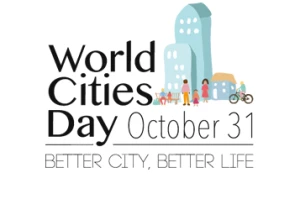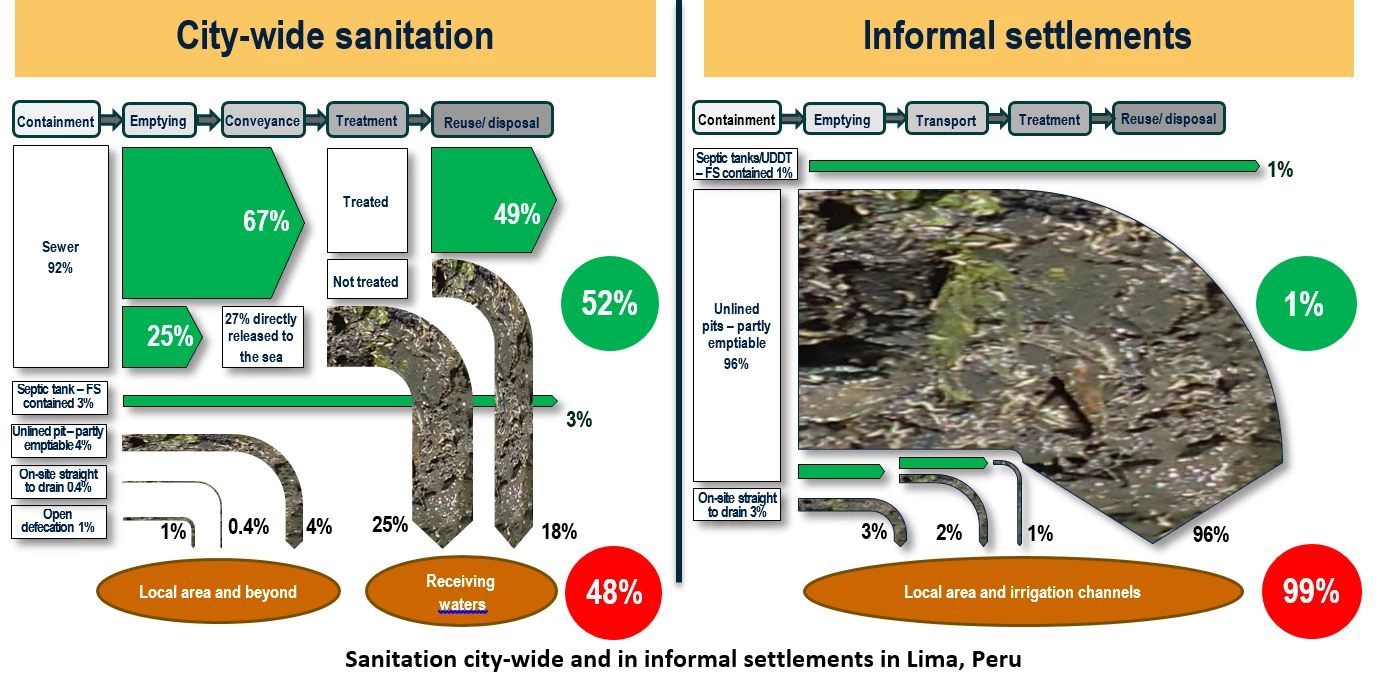 Also available in:
Español
Also available in:
Español
In our previous blogs: Fecal Sludge Management: the invisible elephant in urban sanitation, 5 lessons to manage fecal sludge better, and A tale of two cities: how cities can improve fecal sludge management, we outlined the neglect of Fecal Sludge Management (FSM) and presented new tools for diagnosing urban sanitation challenges and how they can be used. Today, on World Cities Day, we are looking more deeply into a city — Lima, Peru, to shed light on how cities around the world can meet opportunities and address challenges of urbanization including providing improved sanitation for a rapidly growing number of urban residents.
The city-wide sanitation picture
To apply one of the better known FSM tools — the fecal waste flow diagram (SFD) — we use data to provide a city-wide picture of sanitation services at the household level, and how the fecal waste flows through the "sanitation service chain": removal and conveyance from the household containment or WC, to treatment and final disposal or reuse. SFDs provide an easy to understand and visual representation of where fecal waste and the associated pathogens and pollution end up. This enables decision-makers and technical staff to understand and discuss the priority sanitation issues requiring attention in their city.
The diagram on the left above shows the city-wide SFD for Peru’s capital, Lima, a city of around 10 million people. Within the city as a whole, over 90% of residents have access to a flush toilet connected to a sewer, which takes the human waste away from the immediate residential area. It also shows that leakage from the sewerage system is high, and that only just over half of the sewage is treated. Clearly, the sewer system and the treatment facilities need improvement.
But, as with all statistics, a radically different picture may emerge if we dig deeper to look at the situation in particular areas or neighbourhoods, or for specific income groups. How can we develop and design a poor-inclusive sanitation response until we know what the challenges really are?
Sanitation in informal settlements
The SFD on the right above shows clearly that the sanitation services in Lima’s informal settlements do not follow the same pattern as in the wider city. Almost 1 million people live in the informal settlements, but none of them has access to a sewer, and nearly all households who do have access to a toilet store the fecal waste onsite in an unlined pit. All fecal waste stays within the local area as there are no FSM services available.
The sanitation planning and program response will need to include improving the quality of on-site toilets and introducing fecal sludge management — at least in the short and medium term, before sewerage becomes a realistic possibility. With this approach the fecal waste can be safely stored, removed and treated, reducing the public health hazard by protecting the neighbourhoods and the environment from fecal contamination. This will also have a city-wide effect by reducing infections carried into the rest of the city by workers living in the informal settlements.
Different sanitation responses for different areas — within the same city
Lima provides a good example of how evidence-based, disaggregated information can inform the multi-faceted urban sanitation planning and programming which is needed to improve public health and the environment across the city. While the sewerage system needs improvement, quite different approaches are needed to enable people in informal areas to access safe sanitation. More information is available in the Lima FSM Case Study.
Most cities in developing nations have considerable disparities in sanitation service levels. They will need to consider a combination of several different targeted approaches if they are to achieve the Sustainable Development Goals of universal access to safe sanitation. The World Bank’s FSM diagnostic tools are available to help with that process.
How is your city improving urban sanitation? Have you developed a city-wide SFD and another for poor areas? Can other cities learn from it? Please visit the SFD Initiative website to learn more and share your experiences — and by leaving a comment below.





Join the Conversation